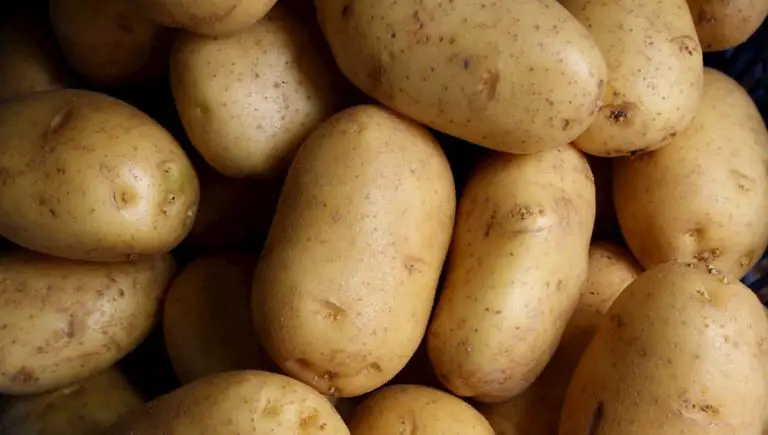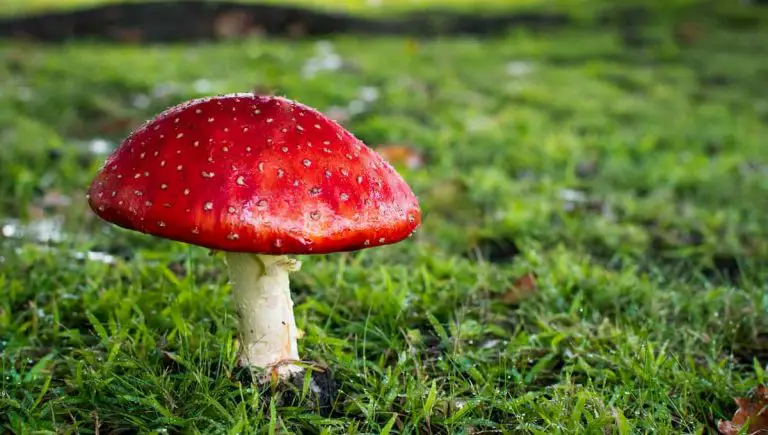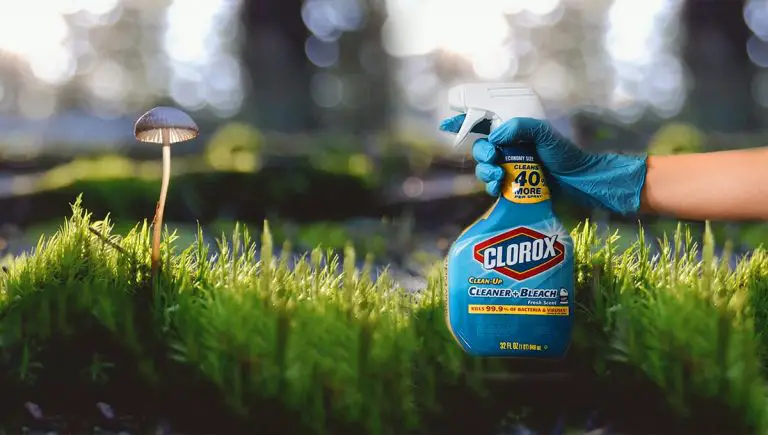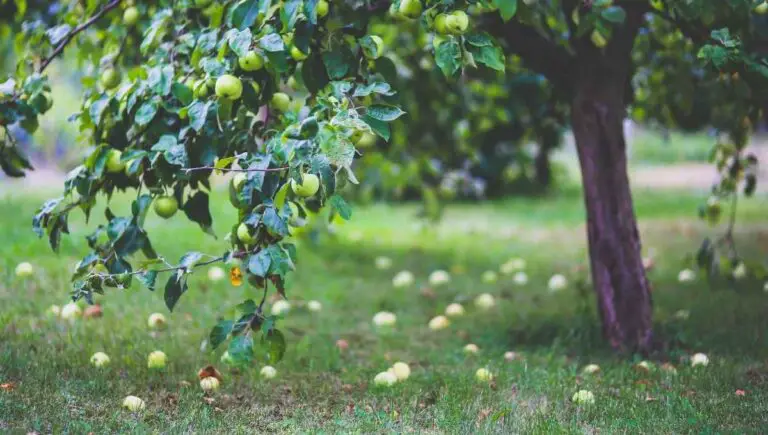How To Get Dead Grass To Grow in Your Yard

No homeowner wants to come home to the sight of a lawn with unattractive brown patches everywhere. Unfortunately unless proper lawn care and maintenance is given, this is bound to happen. If you’re experiencing the same problem, don’t lose hope just yet. You can still bring back the color green into your lawn by learning how to get dead grass to grow back.
So can dead grass come back to life? This is definitely possible, but it’s going to require some time and hard work. In order to learn how to revive dead grass, you need to first understand the reason grass dies or turns yellow in the first place. By addressing the root cause, you will then be able to come up with a solution to your dead grass problem.
The best way to make sure that your lawn regains its lush green color is to continuously care for it. Taking care of your lawn means watering it well, controlling the growth of weeds and mowing it regularly with a reliable mower. Mowing also helps with faster recovery so you can have your green lawn back.
Dormant Grass vs Dead Grass
Seeing more brown patches on your lawn can be disappointing but before you do something about dead grass spots, you have to be certain if you’re dealing with dead grass or just dormant grass. You might now ask, “How do I know if my grass is dormant or dead?” Learning the difference between the two can help determine whether your efforts to revive your lawn will pay off or not.
When you start to see dead grass patches in lawns, it’s easy to assume that the lawn is a goner and you may need to hire someone or spend money to have it restored. But what if you have yellow patches? Is yellow grass dead?
In most cases, what you think is a dead grass color is actually just your lawn going into dormancy. This usually happens during a change of season. Dormancy can happen in both winter and summer. In winter, the grass goes dormant and changes to brown as a way to conserve moisture and nutrients.
When grass goes dormant in summer, it’s usually stressed out by drought and intense heat. Usually, it’s considered salvageable for 3-4 weeks. But over time, without proper management and care from drought, the grass will die.
How to Tell Dormant Grass From Dead Grass
So how can you tell if you’re just dealing with a dormant grass and not actually dead grass patches? A dormant lawn will revive and return to its vibrant green state when weather conditions improve. In most parts of the U.S., grass lawns turn brown when temperatures drop in winter. Once spring comes, they also spring back to life.
Dead grass, on the other hand, is a goner – and unfortunately, it cannot be revived. Dead grass and dormant grass look the same so it’s pretty hard to tell the difference. The solution? Wait it out; wait for the seasons to change and you’ll see if you can still save your lawn or not.
Dormancy also happens during a drought in summer, and in this case, you might wait until late summer or early fall to find out.
Will Watering Dead Grass Bring It Back?
Yes, it will. In fact, watering your lawn heavily and regularly for a couple of days is one way to check if the grass has gone into dormancy or is actually dead.
What Causes Dead Grass Patches?
When you go out and see your lawn looking very unsightly, you may be quick to wonder, “why is my grass dying in patches?” Brown patches on your lawn appear for different reasons, so the first step in learning how to regrow dead grass is to identify the cause behind the loss of the color. Below are the most common reasons brown spots show up in your lawn.
Dog Urine Burns
Animal urine, in general, will get in the way of a homeowner’s attempts at making their lawn presentable. For homeowners, it’s always the pets – particularly dogs and their urine – that’s going to be the problem. Dog urine contains soluble salts that can kill turfgrass, especially when it’s collected in high concentrations over time.
Dead grass from dog urine is probably one of the most common complaints from homeowners. Some would even say dogs and a green lawn don’t mix well because, at some point, a dog is going to urinate on the grass. But if you have and love dogs, you have to learn how to fix dead grass from dog urine if you want to keep your lawn looking nice and green.
You should be able to differentiate dog urine burns from other causes of dead grass patches. You can tell that it’s damage from dog urine when you see a brown area surrounded by dark green grass. Prolonged hot and dry weather can worsen the damage.
Can you revive dead grass caused by dog urine? Yes, you can and the only way to make sure of it is to completely stop your pet from entering your lawn. But that seems impractical for dog owners, doesn’t it? So here are some tips on how to fix dead grass caused by dog urine burns.
- Allow your pet to have access only to less visible parts of the lawn
- Train your dog to urinate in a less visible area
- Water the urinated area frequently – this may not totally heal the patch but it helps in minimizing the damage.
- Mowing dead grass helps maintain a healthy lawn that can recover from damage easily.
Fungus
While several factors cause your lawn to have brown areas with seemingly dead grass, only one gets to be officially called brown patch disease – and it’s caused by fungi. Fungal problems can also cause brown, irregular patches on your lawn so don’t quickly blame your dog if you have unhealthy turf.
Fungi and spores naturally exist on your lawn. Some of them are completely harmless while others can be seriously problematic. Fungi wait for the right conditions to grow and become a full-blown lawn disease. As for brown patch disease, it is caused by a particular fungi species called, Rhizoctonia, which commonly occurs during hot and humid weather, usually in mid- to late summer.
You can tell this when the brown patch is circular, irregular and brownish-yellow in color. Leaves can still stand upright despite being affected by the disease. Upon close inspection, you will notice tan-colored lesions on leaves. In the morning, you will also observe white, cottony mycelium, which indicates the presence of a fungus colony.
Foot Traffic
The purpose of your lawn is not just to give your property an aesthetic appeal but also a place where family and friends can hang out. However, heavy foot traffic is one of the factors that causes damage to your lawn. If you like hosting parties or inviting friends over and spend time outside on your lawn more often, then it’s a good idea to know how to repair dead grass caused by heavy foot traffic.
When someone or a lot of people are stepping on your lawn, it makes the soil more compacted, making it difficult for water to reach the roots. When this happens, the grass will eventually turn brown and make your lawn look ugly.
You need to make sure your grass still has access to water, air and nutrients in order to survive and thrive. Aerating your grass is an ideal solution on how to treat dead grass patches caused by heavy foot traffic. The process involves creating small holes in the ground so air, water and topical fertilizers can still penetrate the ground and reach the roots.
Aerating your lawn can be done with a machine or you can simply do it with manual aerating tools like Truly Holey Manual Lawn Aerator.
There are also aerating shoes available, like these heavy-duty CABASAA Lawn Aerator Shoes, which are ideal for smaller lawns. It should also be a fun way of taking care of your lawn.
How To Revive Dead Grass Fast
Now you know the most common culprits of brown grass patches on your lawn, you have to learn how to bring back dead grass and do it fast. Apart from the abovementioned solutions to each problem, you might also be wondering, “how do I turn my dead grass green?” or Will watering brown grass make it green?
Water is the number one savior for dead grass, so you will find yourself relying on it a lot. Watering regularly with the help of a smart sprinkler like the Rachio Smart Sprinkler helps fight off drought.
How To Get Burnt Grass Green Again
In cases of burnt brown grass patches, heavy applications of water is ideal, as it provides thorough moisture for the root zones.
In cases of drought in hot summer months, your lawn may need 1 to 1.5 inches of water every week. Watering your lawn in summer is best done in the morning with dew covering the grass.
This not only makes your lawn less conducive for harmful fungi growth but also decreases the rate at which water is lost due to evaporation.
What About Your Lawn In Winter?
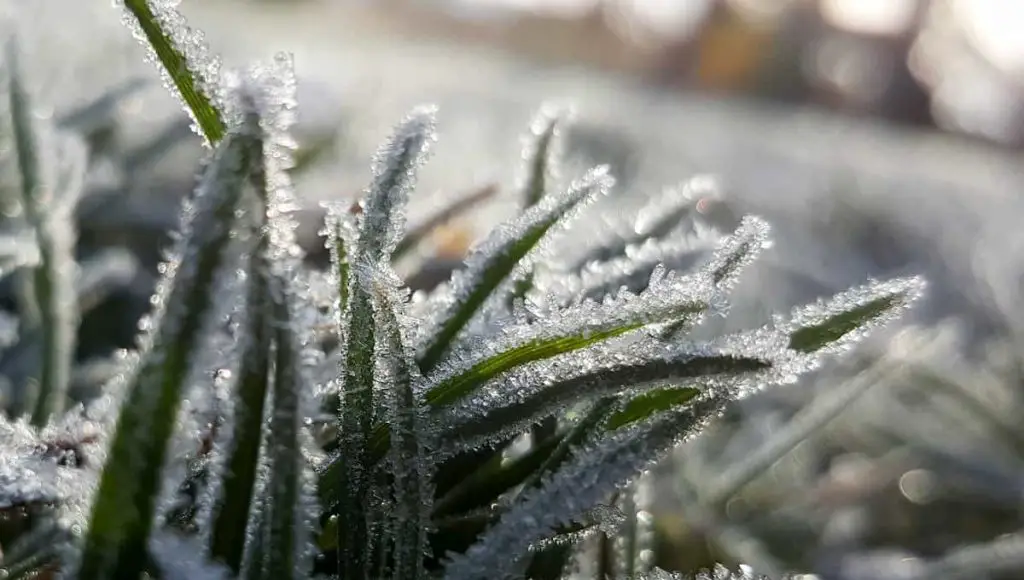
Your lawn needs some TLC all season but not as much as during spring, summer and fall. However, that doesn’t mean that you shouldn’t take care of your lawn in winter.
Preparing your lawn for winter is important to make sure you don’t have to deal with dead grass after winter so much.
The proper way to prepare your lawn for the winter months will still depend on where you live. Warmer places that experience mild winters are fortunate enough to maintain a lush green lawn all throughout the year. In colder climates, homeowners need to do the necessary preparations for the harsh snowfall. Here are some tips on how to prepare your lawn in winter using a climate-appropriate approach.
Change Your Watering Schedule
While you may need to heavily water during hot, dry summer months, you may not need it so much during winter. In areas with warmer climates, you might need to reduce your sprinkle usage. As winter approaches, your lawn is no longer in danger of getting heat burns and so doesn’t need to be watered often.
One way to make sure this gets done with zero effort on your part is using automatic sprinklers, like this Alexa-compatible smart sprinkler from Rachio. When it’s time to change the schedule, doing so is just convenient and super easy.
On the other hand, areas with cool climates should stop watering the lawn as winter approaches. If you live far up north, it’s time to completely stop sprinkler usage. Also keep in mind that draining your sprinkler system is important to preserve the pipes.
Sprinkler systems these days have valves that drain automatically but if you’re not sure about your own sprinkler system, contact your manufacturer.
Rake your leaves
Raking is an important step to winterizing your lawn. Fall season is the best time to do the raking and you must complete it before winter comes. A pile of thick wet leaves will eventually freeze, causing problems to your lawn.
Understandably, raking can be hard work but it’s necessary if you want to protect your lawn and make sure that you won’t find brown patches in grass after winter. So does raking dead grass help it grow then?
Raking helps remove dead grass from yards, which is necessary to determine how much damage your lawn has sustained. Also, raking dead grass in spring is something you need to put in your to-do list after winter in order to make sure you don’t contribute to your lawn’s thatch layer.
How Do I Remove Dead Thatch From My Lawn?
This is also one of the purposes of raking your yard – to remove thatch from your lawn. So what exactly is “thatch”?
In lawn care, thatch is a layer of organic matter that accumulates on a lawn around the base of the grass plants. Thatch is a combination of living and dead plant matter including crowns, stolons, rhizomes, and roots.
Wikipedia Definition
In a nutshell, thatch is a layer of living and dead plant material (leaves, dead grass, roots etc). This layer block any nutrients like water or air from getting to the roots of your lawn. Excessive buildup of thatch hinders water and nutrients from reaching your grass’s root zones.
So if you’re thinking about how to remove dead grass and thatch, raking definitely helps and is the best solution. Thatch rakes like the AMES Adjustable Self-Cleaning Thatch Rake, which will get the job done nicely, but will of course require a bit of elbow grease depending upon the size of your lawn.
If you’re looking for the easiest and best tool to get the job done, you’ll definitely want to use an automated dethatcher like the Greenworks Corded Dethatcher/Scarifer. This will do the same thing as manually raking but 1,000 times faster.
While raking is an important step to prepare your lawn for winter and to remove dead grass patches from lawns, remember that it doesn’t help stimulate new grass growth.
It does prepare your lawn for reseeding, which you need to do if you found bare spots in your lawn and need to refill it.
If you don’t want to reseed for now, will grass spread to bare spots? Should you just wait it out instead of reseeding? If you regularly mow your lawn, your grass will not produce seeds because seeds only develop when there are flowers.
That’s not to say that grass won’t spread to bald spots because some species are capable of doing so, even without flower pollination.
How To Grow Grass
Can you just sprinkle grass seed on lawns and wait for them to grow? Before you learn how to grow grass successfully, it’s important to know what species of grass you’re going to have for your lawn.
Turfgrass falls into two categories: warm-season and cool-season grasses. Each grass species falling to either one of the categories has specific growth requirements, so you need to know and understand about them if you want a beautiful, well-maintained lawn.
Cool-Season Grass
Cool-season grasses, often called “northern grasses,” include Bluegrass, Fescues, Kentucky, Ryegrasses and Bentgrass. They are well-adapted to cool climates and they are hardy, so they tend to thrive in cool months during fall and spring. Growth rates decline once summer hits.
The best time to apply fertilizers for cool-season grass is in fall and spring, just before they grow vigorously. In contrast, you shouldn’t feed your grass in summer as this can promote disease.
Warm-season grass
These types of grass are also referred to as southern grass and they thrive from June through early September. As the name implies, they adapt well to hot and dry weather and will maintain their green color in July and August.
Should I Remove Dead Grass Before Seeding?
Removing dead grass is important if you want a healthier lawn and so yes, you should remove dead grass patches before you start with new grass. This is necessary if your lawn is too weedy or you just want to do things all over again to have a better lawn.
If you’re tending a weed garden more than grass, then sometimes, it’s necessary to kill your lawn with chemicals, (if you choose to do so) and start over. If you don’t want to go this route, you can always use a sod cutter or totally block the sunlight using a plastic sheeting roll.
Lawn Care: How Can I Make My Grass Thicker and Thicker?
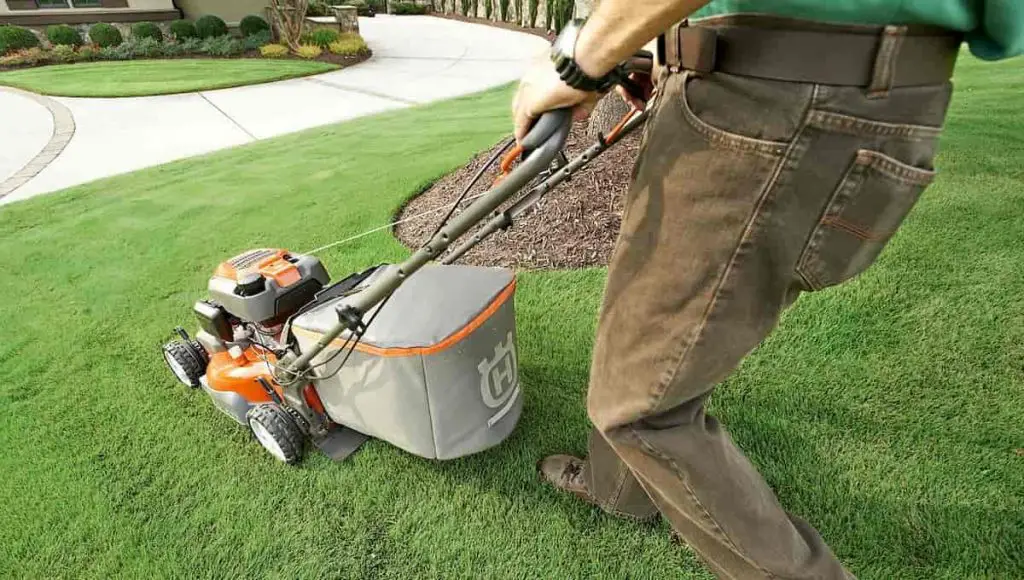
This is a common question from homeowners who want to have a well-manicured lawn. After all, who doesn’t want thick grass in their yard? Thicker, greener and lusher should describe your lawn goals and the good news is that, it’s not difficult to achieve. Below are the necessary steps to make sure your grass grows greener and thicker.
#1. Develop Healthy Soil.
Having a healthy lawn is all about developing good and healthy soil. You can get your soil tested to check the specific needs of your lawn and get recommendations on how to fix potential problems.
When you have your soil tested, you’ll know about your soil’s pH status and other conditions that might inhibit vigorous grass growth. If you don’t want to work with professionals just yet, you can do a manual check of the soil’s texture.
Lawns thrive best in loamy soils. If you have a different soil type, you can improve soil conditions by adding organic matter, grass clippings or compost. You also need to make sure your soil is not compacted. If it is, you can simply use aerating tools.
#2. Mow it!
Mowing is also one of the effective ways of reviving dead grass. While you may think it’s ironic how mowing dead grass can make it grow back, it’s actually effective in helping fertilize your lawn. When you mow, leave the clippings behind. These will decompose over time and become excellent food for your grass, making it grow greener and thicker.
In this case, invest in a reliable mower, like this 21-Inch 13 Amp Corded Electric Lawn Mower 25112 from Greenworks. If you have a smaller lawn, this 14-inch mower from Greenworks will do just fine.
#3. Use The Right Type Of Grass
You can always have a beautiful lawn if you use the right type of grass, which will depend on your location. If you’ve just decided to put up a new lawn, it’s best to do your research on the different types of grass and the best climates that they thrive in.
Grass types that are known to adapt well to your local climate will grow thicker and healthier. Not only that, they’re more resistant to local diseases and pets.
The USDA has provided a guide on the pros and cons of having warm-season vs cool-season grass, their growth requirements, and maintenance measures.
#4. Address Thatch Buildup
As mentioned above, thatch buildup can damage your lawn so you need to address this problem right away. All grass will eventually form a layer of dead and decayed material between the blades of grass and soil. Once it gets too thick, it will be hard for water and nutrients to reach the roots.
Dead leaves and decayed matter are not the only ones that contribute to thatch build-up. Overuse of fertilizer can do that as well. Break up thatch layers by raking through your lawn. It also helps to sprinkle a thin layer of compost in your lawn.
#5. Fertilize
If you want a healthy lawn, you have to feed it. Often, nutrients get leached away with rainfall so doing regular fertilization helps ensure the grass gets the necessary nutrients to grow healthier and thicker.
A starter fertilizer like Scotts 21814 Turf Builder Starter Food helps promote root growth so your new grass can quickly thrive and grow thicker. Simple Lawn Solutions is also an excellent fertilizer that works on any grass types and doesn’t contain harsh chemicals that could bring stress to your lawn.
#6. Control Weeds
You can’t have weeds competing for nutrients if you want your grass to grow healthier and thicker. Weed control is best performed during fall and you will need some help with the use of herbicides.
Most herbicides contain not only ingredients that discourage weed growth but also provide food to nourish your grass. A good example is Doctor Kirchner Natural Weed Killer, which is perfectly safe around pets and kids and doesn’t contain hormone-disrupting chemicals.
Quick Recap:
It is possible to revive dead grass spots but in order to do so, you need to know if you’re dealing with just a dormant lawn or actual dead grass. It’s essential to know the difference between dormant grass vs dead grass.
If in doubt, water your yard and try to check if the grass conditions improve afterwards. If it does, you simply had dormant grass due to weather conditions. If not, you have dead grass in your yard.
Preparing your soil and choosing the right type of grass based on your location are important steps that will determine whether you’ll have a thriving, lush lawn or one that’s resistant to pests and other diseases. Don’t forget that your grass also needs food so fertilize and do it at the right time without overusing.
Moreover, for you to be successful at maintaining a healthy lawn, you need to be knowledgeable about the causes of brown spots or areas in your lawn. They can either be caused by diseases, drought, urine burns or a buildup of thatch. Knowing which one is causing the problem can help you work out a solution.

